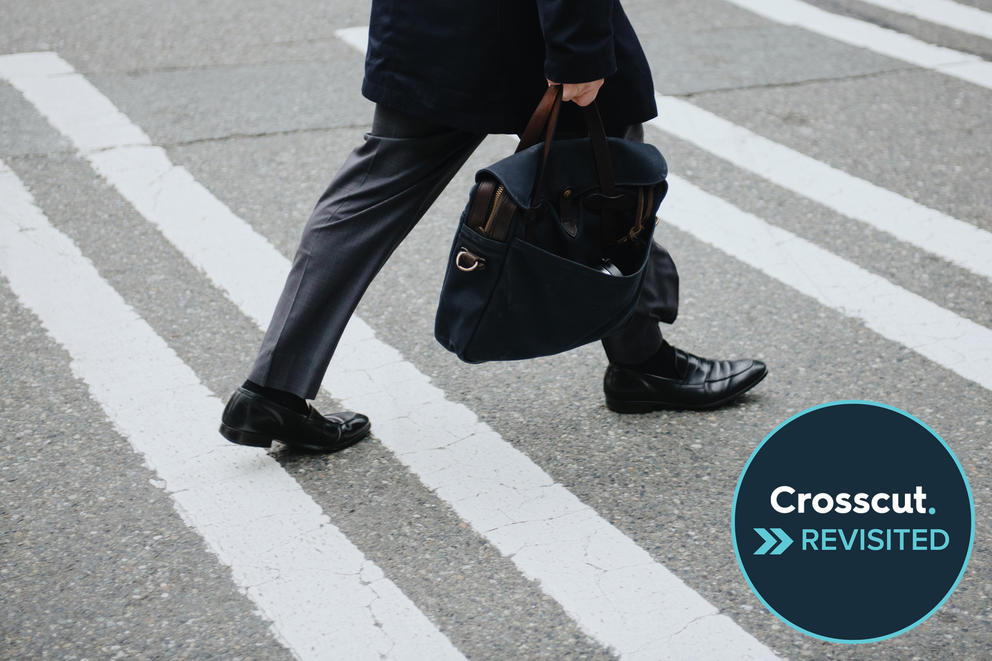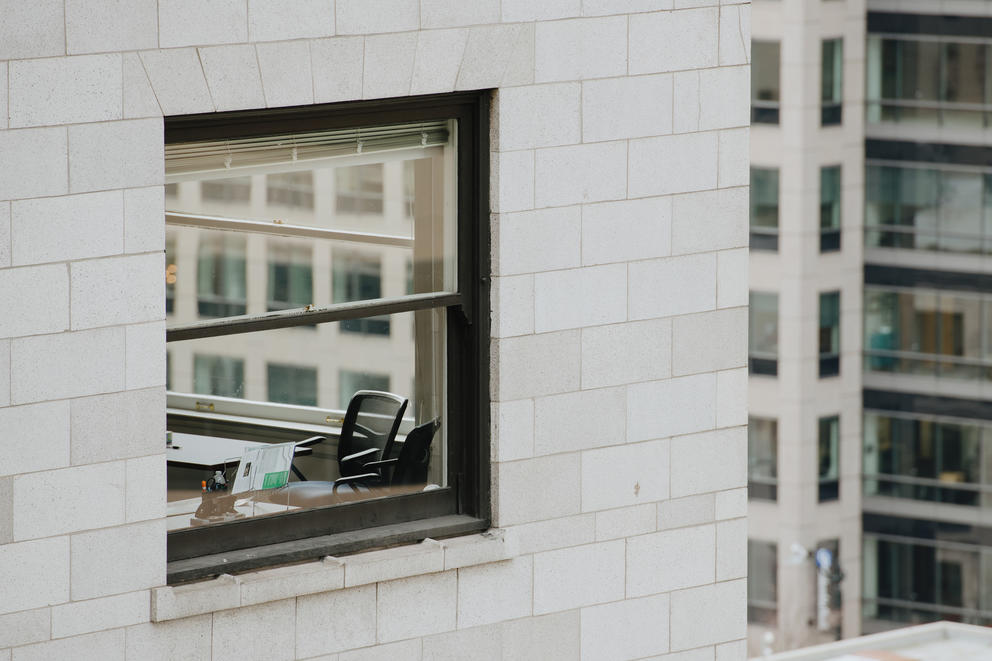In the end, the high-end grocery store just didn’t have enough foot traffic from Downtown workers or residents. Amazon’s 2019 decision to pull out of 30 floors of office space in the Rainier Square Tower above PCC impacted the store before it even opened. The exodus of Downtown white-collar workers during the COVID-19 pandemic and subsequent standard of hybrid remote/in-person work caused further strain.
The Downtown PCC, like so many other businesses that shuttered in the neighborhood in the past three years, needed the influx of the hundreds of thousands of workers who used to come Downtown every weekday pre-pandemic. But nearly half of those workers have not yet returned to the office and may never do so.
In February, Crosscut looked at Downtown Seattle’s pandemic recovery and explored how the neighborhood might need to transform if hybrid work becomes a permanent fixture.
Ten months later, Downtown certainly has made some progress. But how the neighborhood might need to evolve over the coming years remains an open question.
In-person office work is now at about 55% of pre-pandemic levels, according to the Downtown Seattle Association, compared to 43% in February.
Summer tourism and hotel occupancy are back up to 2019 levels. Major events like the Taylor Swift concerts and MLB All Star weekend helped pack people into Downtown hotels at record numbers, though the boon was not shared by all neighborhoods near the stadiums.
But office vacancies have increased this year and could continue to do so for the foreseeable future. In February, office vacancy in the central business district was 21.2% according to CoStar, a real estate data analytics firm. In 2019, the vacancy rate was just 6.6%. CoStar defines the central business district boundaries as First Avenue to I-5 and Yesler Way to Denny Way.
As the year closes, that vacancy rate has grown to 24% in the central business district, with many companies downsizing the amount of space they lease to accommodate hybrid work. CoStar analyst Elliott Krivenko said he wouldn’t be surprised to see the central business district vacancy rate hit close to 30% by the end of 2024.
In the long run, however, Krivenko thinks Seattle’s office market will recover just fine. “We’re expected to outperform other metros even though growth is slowing and 2024 is anticipated to be even slower. We have pretty solid fundamentals; this is just a challenging period for us.”
Mayor Bruce Harrell has made Downtown recovery a centerpiece of his first-term agenda. His Downtown Activation Plan is a laundry list of executive and legislative actions meant to spur economic and social activity.
In an emailed statement, the mayor’s office wrote: “Downtown is the heartbeat of our city, and economic center for our region and state. Our Downtown Activation Plan focuses on short-, medium-, and long-term efforts that address our complex challenges while encouraging the strong presence of residents, workers, and tourists year-round. This summer, we put our plan into action and we are seeing real signs of progress and building toward even more to come.”
Of the 46 initiatives outlined in the plan, Harrell’s office said the city completed 12 this year. They include smaller things like making it easier for food trucks and special events to get permitted, hosting art installations in vacant storefronts and building a pickleball court on a vacant lot in Belltown.
There are also larger actions, such as increasing the height new apartment buildings can be built along Third Avenue, launching the new CARES public safety department that sends mental health professionals out on certain emergency calls and aligning city law with the new state drug possession law.
Downtown Seattle Association CEO Jon Scholes is pleased with the efforts the Harrell administration has taken so far.
“It’s all moving in the right direction. There’s not one piece of legislation or investment or policy move that can be made,” said Scholes.
The Downtown Seattle Association has its own list of ideas for increasing the number of workers, visitors and residents spending time in and living Downtown. Chief among them: addressing the fentanyl drug crisis and the sense of public disorder that comes with it.
“We believe the public sector needs to continue staying laser-focused on Downtown and addressing the fentanyl crisis,” said Scholes. “None of the [recovery initiatives] will be successful if people don’t feel safe.”
The city has several new and ongoing initiatives on the public safety front. In September, the City Council passed its drug bill, giving the City Attorney’s Office authority to prosecute drug possession and public use as a gross misdemeanor. As part of that, the mayor issued an executive order directing police officers to divert drug users to treatment while focusing arrest and prosecution efforts on people committing higher-level crimes or posing physical threats.
The bill was controversial, with opponents arguing it simply rehashed the War on Drugs tactic of locking away people with substance-use disorders without helping them.
Lisa Daugaard, co-director of nonprofit Purpose Dignity Action, said she’s been encouraged that in the wake of the drug bill’s passage, nobody has gone to jail or been referred for prosecution for drug possession. Instead, people are being referred to services and treatment. Daugaard’s nonprofit helps run a program called LEAD that allows police officers and community members to “divert” low-level criminal offenders to case management and social services rather than enter the criminal legal system.
Daugaard said there is nearly a consensus among the powers that be in Seattle that arresting people for drug addiction is not a path out of the drug crisis.
“There’s a strong, nearly border-to-border consensus that we need a lot of action and response to these conditions, but very little of that action and response should be traditional enforcement or coercive strategies. I think that’s a big deal,” she explained.
But, as is often the case, the resources available to address the root causes of addiction, poverty and so-called survival crimes do not meet the scale of need. There isn’t enough emergency shelter, affordable housing or treatment services.
In a Dec. 12 presentation to the City Council, representatives from Purpose Dignity Action said the LEAD program currently has more than 750 clients enrolled and, without more funding to expand, could hit its maximum capacity of 1,060 participants by late April or early May 2024. The city’s new drug strategy is expected to greatly increase the number of LEAD referrals.
In addition to addressing the drug crisis, the Downtown Seattle Association wants to see more residents move Downtown to lessen the neighborhood’s reliance on office workers. Scholes said there are promising signs of this already, with more than 7,000 units of new apartments in the permitting and construction pipeline in the greater Downtown area, including Belltown, South Lake Union, Pioneer Square and the Chinatown-International District.
In February, leaders in cities across North America were excited about the idea of office-to-residential conversions. On its face it makes perfect sense: Downtowns have too much office space and not enough housing. But conversions are challenging and expensive since office buildings are built with less consideration of plumbing, natural light and other factors that apartments need, and older buildings often lack modern seismic and other safety standards.
Seattle is continuing to explore the possibility, however. In May, the Office of Planning and Community Development held a design contest and invited architects to submit residential conversion proposals for existing office buildings in Seattle.
OPCD has continued working with the winners of the contest to try to make a conversion project happen and in turn set the stage for other office-to-residential projects. OPCD expects that there are probably fewer than a dozen potential candidates for conversion. But conversions could have an outsized impact in the core of the central business district, where there currently are not many residential buildings.
“A few victories could make a huge difference,” said Lyle Bicknell, an urban designer at OPCD. “It’s not a silver bullet. … It’s one piece of the solution.”
Scholes thinks there are as many, if not more, opportunities for other types of office conversions that could reshape Downtown. For example, he envisions office-to-education conversions – public schools for children living near Downtown, higher education or technical training facilities.
With that, he argues, Downtown needs to continue investing in the neighborhood amenities people expect such as parks and open space, community centers, restaurants that cater to families and more.
Correction: An earlier version of this article referred to the nonprofit Purpose Dignity Action as "Purpose Action Dignity."




